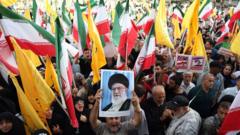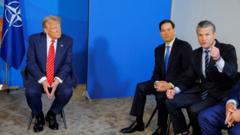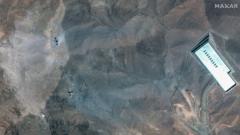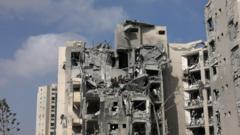A recent leaked Pentagon report indicates that US military strikes on Iran's nuclear facilities have temporarily hindered their program; however, experts caution that assessing the full impact requires further evaluation. The ongoing difficulties in precisely determining the extent of the damage highlight the complexities of military and intelligence assessments in this high-stakes environment.
Unraveling the Impact of US Strikes on Iran's Nuclear Program
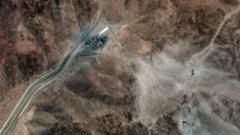
Unraveling the Impact of US Strikes on Iran's Nuclear Program
A leaked assessment suggests the US strikes may have limited the effectiveness of Iran's nuclear ambitions, but key questions on damage and future developments remain.
A leaked assessment from the US Defense Intelligence Agency (DIA) has ignited renewed scrutiny into the effectiveness of recent strikes on Iran's nuclear facilities, particularly the heavily watched Fordo site. Initially disclosed in 2009 as hosting a covert nuclear facility, Fordo is considered one of the world's most surveilled locations. The DIA report posits that while the strikes may have set back Iran's nuclear ambitions, the core components of the program remain largely intact, delaying progress by a matter of months rather than years. However, this evaluation is classified as "low confidence," reflecting the challenges inherent in gathering accurate intelligence from such fortified sites.
General Dan Caine, Chairman of the Joint Chiefs, emphasized that final assessments of the damage inflicted will require a considerable amount of time and investigative work. Satellite imagery can reveal surface damage but fails to provide insight into the subterranean infrastructure whose resilience may have mitigated the explosive impact of the strikes. Reports suggest the use of innovative munitions in these operations; however, the design of facilities like Fordo, reinforced with thick concrete, may have safeguarded crucial machinery from complete destruction.
Critical components of Iran's nuclear program, specifically centrifuges used to enrich uranium, are particularly susceptible to explosive force given their operational speed and sensitivity. Therefore, the aftermath likely includes a substantial number of these devices being rendered inoperable due to the blasts. Gaining a complete understanding of the strike's effectiveness will necessitate broad-ranging intelligence operations. Tools such as seismic detectors, radiation sniffers, and LIDAR technology will play vital roles in creating a true representation of what occurred beneath the surface. Additionally, insights gleaned from informants and intercepted communications could provide further clarity on Iran’s internal discussions post-strike.
The potential for Iran to relocate its nuclear materials poses an immediate concern. Traffic preceding the attack, reportedly involving a fleet of trucks at Fordo, raises questions about whether weapon-grade uranium or key centrifuges were moved to alternative sites. Speculation surrounds another mountain dubbed "pickaxe" where there are indications that elements of the nuclear program might have been redeployed. Furthermore, Iran's acquisition of highly enriched uranium does not alone equate to a functional weapon; subsequent phases necessitate advanced scientific capabilities for weaponization and system development.
Previous actions, including targeted assassinations of Iranian scientists, have aimed to stall the program's timeline. While the recent military strikes have undoubtedly delayed Iran’s nuclear trajectory, the absence of definitive, quantifiable damage calls into question the long-term impact. Intelligence analysts will be scrutinizing developments in the coming months, especially if signs emerge that Iran is stealthily rebuilding its ambitions or accelerating toward nuclear weaponization. The conflict’s trajectory hangs on the evolving dynamics surrounding Iran's nuclear capabilities in the aftermath of these strikes.







